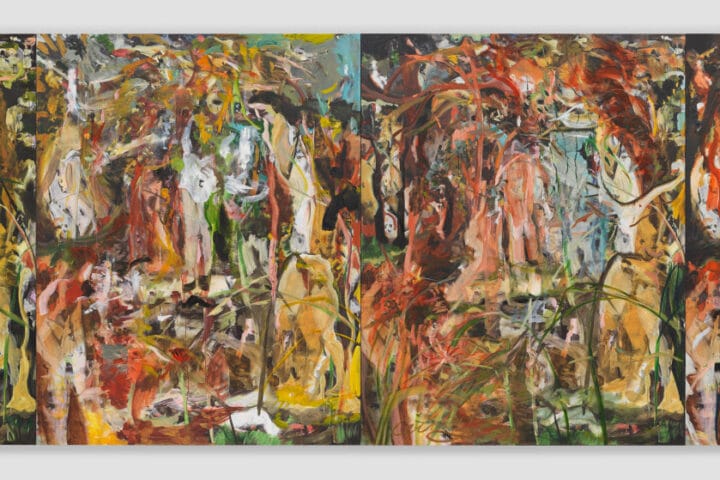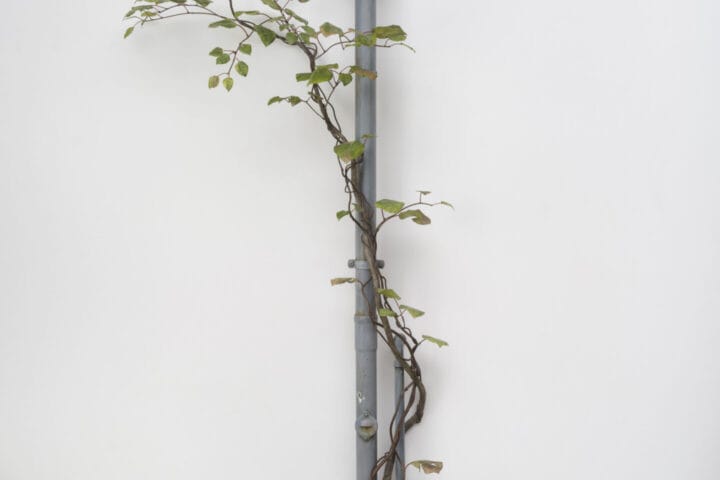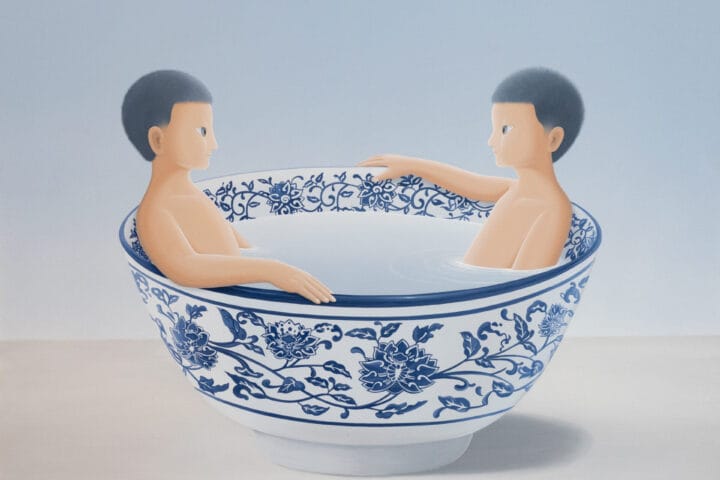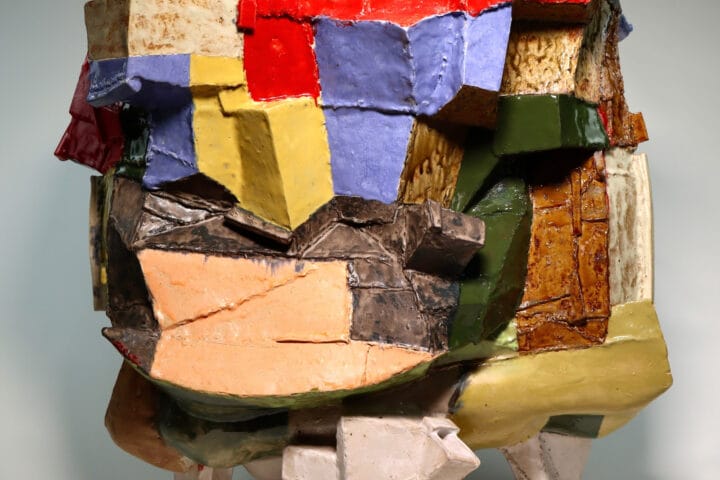The Samdani Art Foundation today announces further details of the sixth edition of the Dhaka Art Summit (DAS), which takes place from 3 – 11 February 2023 at Bangladesh Shilpakala Academy. The first edition of the Summit to have a Bangla title, Bonna – both the word for ‘flood’ and a girl’s name in Bengali – will bring together artists, architects and community groups, weaving together the country’s nuanced relationship with words and water.
Led by Chief Curator, Diana Campbell, the Dhaka Art Summit is the world’s largest international, non-commercial research and exhibition platform for art and architecture related to South Asia. A bridge connecting Bangladesh to the rest of the world, over 140 local and international artists and architects will be part of the 2023 edition including: Lucas Arruda, Matt Copson, Felecia Davis, Amitav Ghosh with Salman Toor and Ali Sethi, Afra Eisma, Kelly Sinnapah Mary, Hana Miletić, Roman Ondák, Suchi Reddy, Kamruzzaman Shadhin, Afrah Shafiq, Ayesha Sultana, Munem Wasif and Shen Xin. The Summit will also present collaborative, artist-led community projects by Anga Art Collective, Gidree Bawlee Foundationfor the Arts and Shwasmul Arts, and TransEnd with Ghazaleh Avarzamani. Over 50% of the works on view will be new commissions, exhibitions and performances, which will be shown alongside historic works by artists such as Chittoprasad Bhattacharya, Leela Mukherjee, Benode Behari Mukherjee, Satyajit Ray and Lala Rukh. 85% of the participants will come from across the Global South and its diasporas, over 60% from Bangladesh and 50% will be women.
Arranged around a series of intersecting exhibitions, the Summit will examine the multiplicity of meanings around weather and water through the lens of Bangladeshis. The works on display will tell stories, imagine futures and ask questions: how does the same word migrate from positive to negative connotations? Why are the words for weather gendered? What is the relationship between gender, the built environment and climate change? How do you tell the story of a crisis, while facilitating hope? Returning guest curator Bishwajit Goswami’s (Assistant Professor, University of Dhaka, Bangladesh), exhibition দ্বৈধ (a duality) – a collaboration Brihatta Art Foundation with research support from Muhammad Nafisur Rahman (Assistant Professor, University of Cincinnati) will present an experiential view into how Bangladeshi artists have been working with and depicting climate change from a situated perspective linking words and weather.
As part of Bonna, Sean Anderson (Associate Professor, Cornell University) curates To Enter the Sky: an exhibition which will bring together examples of architectures of resilience centered around Bangladesh and the broader South Asian region. Works and installations will observe how architecture, beyond the building, can activate new ways of encountering materiality, collaboration, community, sovereignty and citizenship. Works by architects, artists and collectives including Suchi Reddy, Felecia Davis, We Are From Here, Rizvi Hassan and Kashef Chowdhury will establish how the individual and collective experiences that inform the experience of the built environment can be responsive yet entangled and informed by expanded narratives of becoming.
Central to 2023 edition will be Very Small Feelings, an exhibition and platform co-produced by the Samdani Art Foundation, Dhaka and the Kiran Nadar Museum of Art (KNMA), Delhi. The depth and breadth of their collaboration is unprecedented in the South Asian region, with extensive facilitation and exchange between contemporary artists through exhibition-making, publishing, co-commissioning, and loans of artworks between Bangladesh and India. It will mark the first time that two major contemporary art institutions from South Asia have cooperated on this scale. Co-curated by Diana Campbell and Akansha Rastogi (Senior Curator at KNMA) with Ruxmini Choudhury (Assistant Curator, Samdani Art Foundation), Very Small Feelings will travel to KNMA for an expanded iteration in July 2023, marking the start of a long-term institutional exchange. As KNMA builds its permanent museum building in New Delhi and SAF looks towards opening Srihatta in Sylhet, this partnership aims to address and engage the younger voices of the subcontinent, bringing them into the fold and forming new forms of institutional collaboration.
Conceived as a ‘spread’ where stories, rituals, characters, memories and actions provide a space for intergenerational conversations and entanglements, Very Small Feelings sees youth as a conceptual category, not defined by age, but as a place of possibility. Akansha Rastogi elaborates: ‘Childhood is a formative period where the origin of self begins, and Very Small Feelings treats it as a transformative energy and state of being that one always carries within the self. It becomes a place where one can enter and exit at will, and deposit remembered lived experiences (…) a generative space for learning and exchange. Very Small Feelings seeks to encounter the ‘inner child’ and bind us strongly to it.’

Oral history and folklore
The projects and programming for DAS 2023 will bring together voices from Bangladesh, India and the global diaspora, drawing on myth, folklore, fables and the power of oral histories – of telling and retelling stories. Participating artists tease, question and engage with the narratives embedded in one’s consciousness. Renowned author Amitav Ghosh’s Jungle Nama, an adaptation of a legend from the Sundarbans which speaks to nature, human boundaries and balance, will come to life through its audio-visual presentation and collaboration with Salman Toor and Ali Sethi. Ghosh says, ‘This is a collaborative project and there could be no better way of bringing the different aspects of the work together than in an installation for this exhibition, which celebrates the role of storytelling in society.’
A performance work by Indian artist Lapdiang Syiem (co-commissioned by the Samdani Art Foundation, Kiran Nadar Museum of Art and Art Dubai) connects India and Bangladesh via the folklore of the Shillong’s Khasi hill tribes, and a presentation by the Anga Art Collective focuses on the memories of village elders in western Assam close to the Bangladesh border, who were forced to abandon their homes because of mining activities. Many of these works highlight the closeness of Bangladesh and East and Northeast India, through language, shared borders, stories and climate challenges. Focusing on the experience of indigenous communities, a panel on the opening day will widen out these perspectives into Guam and the Pacific, which share similar language and climate struggles.
Looking beyond the subcontinent, the Summit will premiere Afrah Shafiq’s work Nobody Knows for Certain, a narrative video game resulting from a three-year research project – supported by the Field Research program of Garage Museum of Contemporary Art – on the cultural exchange between the USSR and South Asia during the Cold War. Soviet children’s books were translated into 15 Indian languages, leading to Slavic fairytales and Soviet stories forming a significant part of a generation’s childhood memories – leaving them with an abiding affection for a nation that was never theirs and which no longer exists. GhazalehAvarzamani’s Desire is Tender is Love is Love II, is a response to the Point Four Program, a colonial post-war educational programme to help developing nations ‘help themselves’ that was active in South Asia at the same time as the spread of Soviet children’s books. Through exploring the political and domestic associations of soap as a material turned art object, this project examines the politics of education and the process of colonising the mind.

Young (er) voices and intergenerational conversations
Set amid a region facing the realities of climate change and the ongoing debate about our global futures, Bonna seeks to include younger voices, and highlight perspectives of Bengali children, young adults and their first-hand experiences of climate change. This tuning into voices of different generations is facilitated in collaboration with many local organisations in Bangladesh. 1,200 Bangladeshi children have made artistic contributions to the exhibition as part of the Summit’s production process and education programming in advance of the opening. Gidree Bawlee‘s theatre group in collaboration with Shwasmul Arts brings together children from Thakurgaon and Khulna – in the north and south of the country – to create Echoes, a live performance commission about Fair Rural Transition. This programme focuses on promoting a more ecologically and socially sustainable economic system to improve the livelihoods of rural communities.
The framework of exhibition provides a space to explore both childhood as the origin of self and the dynamic that flows between community to self. It is a space layered with relationships and intergenerational exchange. Roman Ondák’s performance Teaching to Walk features a mother accompanying her son as he takes his first steps in the gallery, Matthew Krishanu’s paintings – loosely based on himself and his brother – explore sibling relationships and childhood scenes layered with subjects of race, play and memory. Elsewhere, Aditya Novali’s ongoing project Significant Other is developed from his experience with his neurodivergent younger sister, Ade Novali. Whilst he has struggled to communicate with her, he discovered that she finds comfort in drawing obsessively and that her works exhibit a similar visual language and orderliness to his own abstract compositions. For the Summit, Ade and Aditya Novali will present a collaborative, site-specific installation that speaks to the communication between the two siblings that transcends words.
The Samdani Art Award
Curated by Anne Barlow (Director of Tate St Ives), the Samdani Art Award presents new works by 12 emerging Bangladeshi artists who reflect on social, economic and ecological concerns in the midst of one of the most difficult climatic periods for South Asia. In an ongoing collaboration with Delfina Foundation, the Award gives artists the opportunity to create new work for the Summit and to be supported in a residency at Delfina. The shortlisted artists are: Ashfika Rahman, Dinar Sultana Putul, Dipa Mahbuba Yasmin, Faysal Zaman, Habiba Nowrose, Md Fazla, Rabbi Fatiq, Mojahid Musa, Purnima Aktar, Rakib Anwar, Rasel Rana, Sohorab Rabbey and Sumi Anjuman. Past winners of the award have included Ayesha Sultana, whose works have gone on to be acquired by SFMoMA, Tate and the Queensland Gallery of Modern Art.










